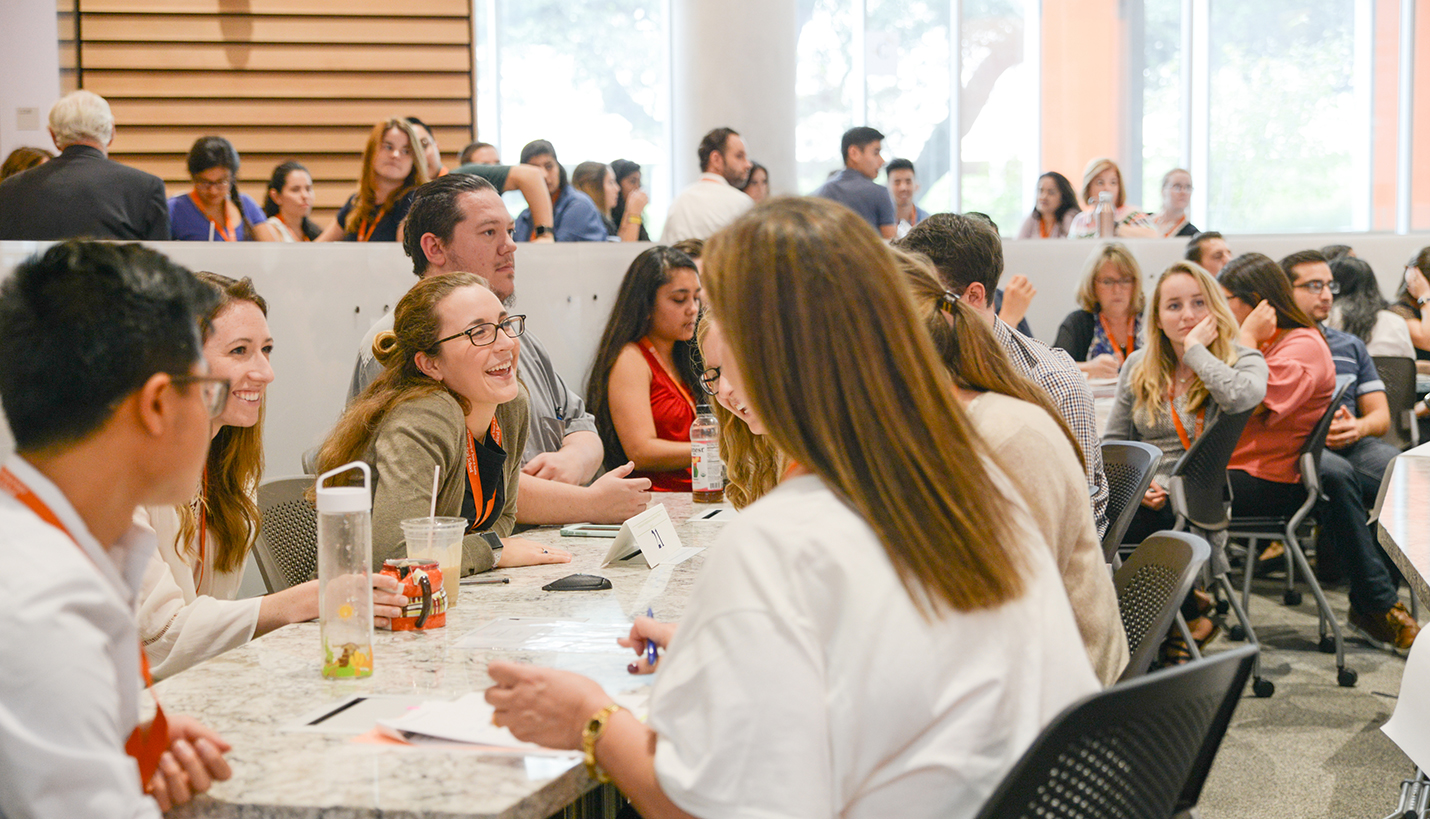

New School of Thought at New School of Medicine
The Dell Medical School at The University of Texas is the first Tier One public university in the United States to build a new medical school from the ground up in almost 50 years. It is also one of the most innovative medical schools in the US and the Association of American Medical Colleges has taken note.
Page was an integral part of the effort to design and brand the university. Its motto, Rethink Everything, reflects how the school strives to meet the needs of students and the community today - and tomorrow. Lawrence Speck, Page Senior Principal and a UT Austin School of Architecture professor who helped design the facility, cites Winston Churchill’s quote, “We shape our buildings, and afterwards, our buildings shape us,” to underscore the impact physical design can have on curricular goals.
Among the design features meant to promote collaboration and innovation at Dell Medical School are 10 small-group study rooms that are open 24/7, where students can write on glass walls. There’s also a lab that combines access to human cadavers with sophisticated audio-visual technology. And classrooms use swivel chairs instead of fixed chairs facing the front of the room so students can interact more easily with one another.
To further its goal of enhancing inter-professional education, the medical school contributed to renovating the UT Austin School of Nursing and the two now share spaces. In addition, students and faculty from various disciplines, including pharmacy, biomedical engineering, and kinesiology and health education, meet in the school’s Team-Based Learning Center each week.
One of the medical school’s more compelling features is the five-story Health Learning Building, where students and faculty frequently encounter each other in wide, open halls and stairways. “This helps create a larger sense of community,” Speck notes. On the way to his fifth-floor office, for example, the medical school dean often interacts with students.
The key to successful integration of a building’s form with educational function, Speck found, was a strong collaboration between medical school personnel and architects. “We had a lot of back and forth, and it felt like a real team,” he says. “It’s all about customizing architecture and design for the institution’s pedagogical needs.”
To read the AAMC News article in full, click here.
To learn more about the project, click here.
To learn more about the Page Academic market sector, click here.
03/22/2018
People
- Daniel Brooks
- Robert E. Burke
- Ginny Chilton
- Joshua D. Coleman
- Kregg Elsass
- Mattia J. Flabiano III
- Patrick Gurley
- Breanne Hanson
- Shawn-Marie Henson
- Jeffrey G. Jewesson
- Matthew Z. Leach
- Ryan Losch
- Joseph P. Moore
- Erin D. Nash
- Bryan O'Sullivan
- Freddy Padilla
- Dale Robinson
- Brian D. Roeder
- Sana Sabharwal
- Kimberly Schuessler
- Jerald L. Segner
- Jonah T. Sendelbach
- Talmadge Smith
- Lawrence W. Speck
- Wendy Dunnam Tita
- Randy C. Twedt
Related Posts
- When the User Is Also the Designer
- New Texas School Standards Posted for Public Comment
- Enhancing Page's Strategic and Analytic Teams
- Learning how to engineer college, university HVACs better
- Trends In Student Housing Programming, Design
- Elevating Education Through Design
- Design Excellence








